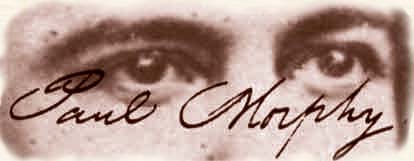| William Lewis was never one of Morphy's opponents, but he
befriended Edge and was the stakes-holder during the Morphy-Lowenthal match. William Lewis was born in Birmingham, England in 1787. He
first learn to play chess at Tom's Coffee House where the London Chess Club
met and at the Salopian Coffee House where Jacob Surratt, the house
professional, instructed him in the finer points.[/color]
 Thomas
Twining, whose Twinning Tea Company is still around, bought the conveniently
named Tom's Coffee House, located in Devereux Court just off the Strand in
the parish of St Clement Danes, in 1706 when he was 31. It had been in
established about 50 years prior to his purchase. Thomas
Twining, whose Twinning Tea Company is still around, bought the conveniently
named Tom's Coffee House, located in Devereux Court just off the Strand in
the parish of St Clement Danes, in 1706 when he was 31. It had been in
established about 50 years prior to his purchase.
According to the Twinning
Co, history, "Men – but never women – of all classes would gather there
to drink, to gossip, and to do business. Coffee shops gathered a loyal
clientele by specializing in particular products or by encouraging customers
with common interests. Poets, for instance, would go to one establishment;
army officers, to another.
The coffee house is where tipping began. Customers who wanted to be sure of
speedy service would drop a small gratuity into a wall-mounted box inscribed
with the letters ‘TIP’ (‘to insure promptness’)."
To quote Dicken's again:
"Upon the death of Philidor, the Chess Clubs at the
West-end seem to have declined; and in 1807, the stronghold and rallying
point for the lovers of the game was the [b]London Chess Club[/b], which was
established in the City, and for many years held its meetings at Tom's
Coffee-house, in Cornhill. To this Club we are indebted for many of the
finest chess-players of the age; and after the lapse of nearly a century,
the Club still flourished, and numbered among its members some of the
leading proficients."
In 1819 (the year Sarratt died) Lewis took a job as the operator
of the Turk, the chess automaton, during it's English tour. He was
supplanted by Peter Williams (not Elijah Williams, as so often seen).
In 1821 Lewis and John Cochrane met with Deschapelles in their triangular
match. Lewis, receiving odds of Pawn and the move,
beat Deschapelles +1 =2.
They met again in 1823. Some places indicate there were two matches, one
ending +1 -1 and the other +1 -4 in Bourdonnais' favor. Others seem to think
it was a single match with Bourdonnais winning +5-2. Either way, Lewis was
definitely weaker than Bourdonnais. Hooper and Whyld claim it was in 1825,
but that doesn't seem to be the case.
In 1825, however, Lewis open a subscription chess room at St. Martin's Lane
and took on Alexander McDonnell, an Irish player, as a pupil.
Lewis headed the London Chess Club team in their correspondence match with
the Edinburgh Chess Club - a match that lasted from 1824 to 1828. The London
Club was favored to win by a large margin. However, Edinburgh, headed by a
relatively unknown named James Donaldson won by a score of +2 -1 =2.
In 1827, Lewis' chess room folded when he went bankrupt through an
ill-advised investment in the piano business. Then, after the embarrassing
loss to Edinburgh in the most publicized match to date, he gradually
withdrew from chess competition.
Following the tradition of his mentor, Sarratt, William Lewis, who took on
the less pretentious title Teacher of Chess (Sarratt had the
self-appointed sobriquet, the Professor of Chess), translated some
earlier works such a Greco in 1819 and Carrera in 1822. He also wrote
several books:
His first was Oriental Chess (in two volumes) in 1817 and then a
revised edition of Sarratt's Treatise on Chess in 1822. (Mrs. Sarratt,
impoverished by her husband's sickness and death, had published her own
supposedly superior revision. Lewis's book directly competed for sales. It's
also worth noting that when a fund was being establish on her behalf in
1843, Lewis' name wasn't on the list of subscribers.)
In 1831, he published Series of Progressive Lessons followed by its
sequel, Second Series of Progressive Lessons the following year.
These books offered something about openings and a bit of analysis as well
as a study of the Lewis counter-gambit. In 1838 he published The
Chessboard Companion and in 1844, his Treatise on the Game of Chess.
here's a sample from Treatise on the Game of Chess:
"The King's Gambit is perhaps the most instructive, as it is certainly the
most entertaining, of all the Openings. It abounds in difficult and
interesting positions, and has more variety than any other method of
beginning the game. Nearly all the best writers on the game of Chess agree
that the King's Gambit is a hazardous game for the first player, because he
sacrifices a pawn without gaining a corresponding advantage of position;
this is true, but it must not be forgotten that the second player has one of
his pawns doubled and that a pawn move, so circumstanced, does not
necessarily win the game."
William Lewis stayed active to some degree in chess throughout
his life. This is evident since in 1858, he was the stakes-holder in the
Morphy-Lowenthal match. He lived until 1870.
Some games by William Lewis
|

